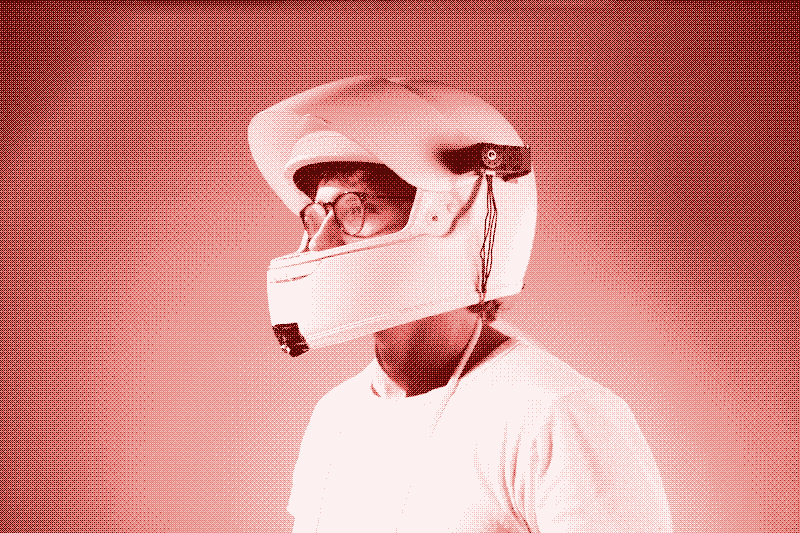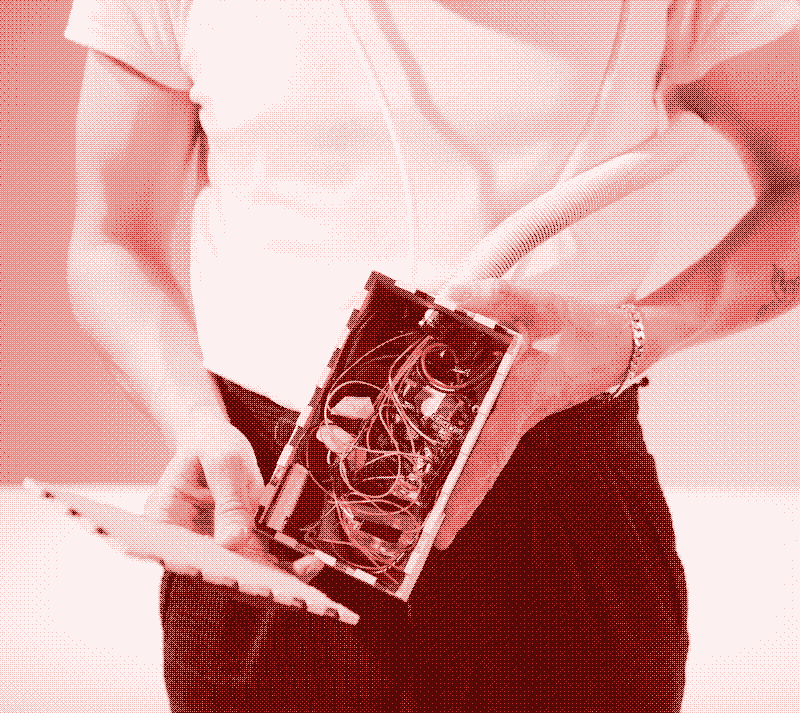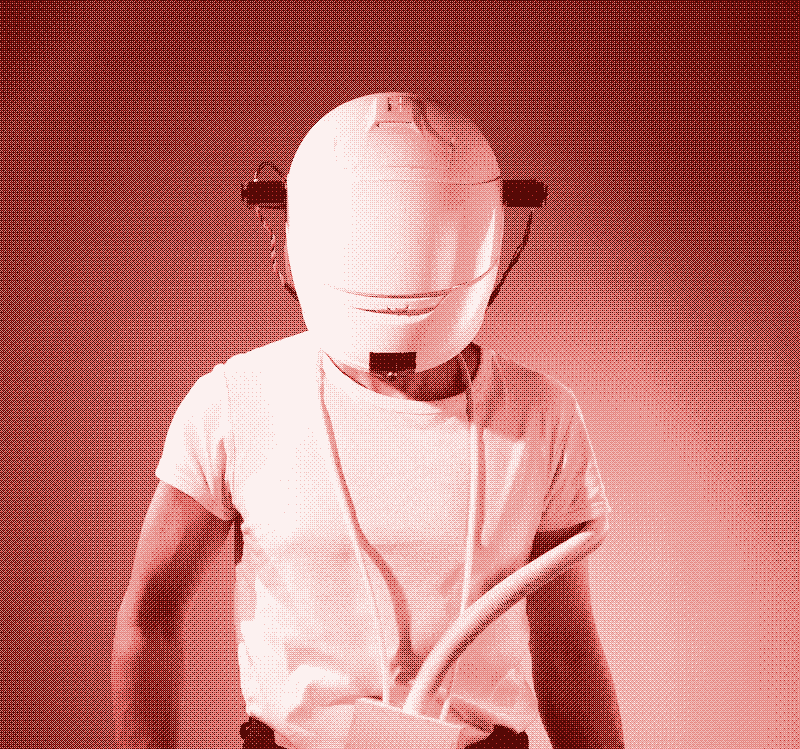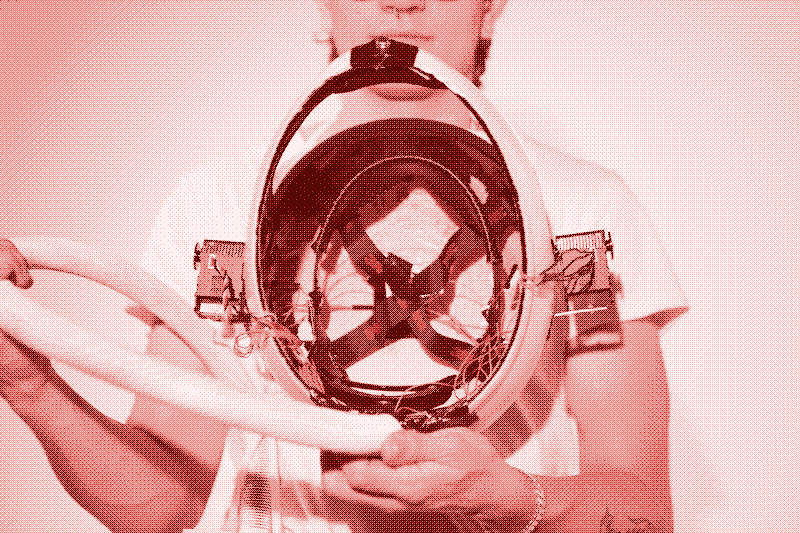mentors: Luke Franzke, Paulina Zybinska
with: Mo Bünzli, Elena Walther
exhibited at: Bits ’n’ Bolts 2023 @ ZW Zürich

me wearing the helmet while it’s still open and reacting to its surroundings
abstract
The project “Alienation” consists of a wearable helmet that translates auditory and visual inputs into haptic feedback through vibrations. Once a certain threshold is reached, the helmet enters shutdown mode. This is to simulate sensory overstimulation and the physical aspects it comes with.
description
“Alienation” – the feeling of not belonging, being cut off from the rest of the world. This sentiment is echoed by the physical appearance of the wearable: an astronaut helmet with cables extending from it, a box that connects to a tube.

the arduino and cables inside the box
After putting on the helmet and pressing the button on the attached box, the process begins. Through an externally attached microphone, the helmet records the surrounding noise level. As the recorded sounds build up on one another, they are translated into a haptic experience inside of the helmet: vibrations can be felt on the scalp. The more the auditory input increases, the stronger the vibrations become. This continues until a stimulation threshold is reached, and the helmet’s visor closes on its own accord. Suddenly, the wearer’s world is reduced to the helmet’s white interior – outside noises are now muted, and the wearer is effectively cut off from the outside.
This experience simulates the concept of sensory overstimulation some neurodivergent individuals, such as people with autism or ADHD, experience. Visual and auditory impressions are felt strongly, become distracting, and add a level of psychological stress. Some people report entering shutdown mode after this stress becomes too much – this can express itself through dissociation: the brain coping through “removing” itself from the surrounding environment.
impressions

the helmet when it closes

the inside of the helmet with cables, servo motors and vibration motors visible